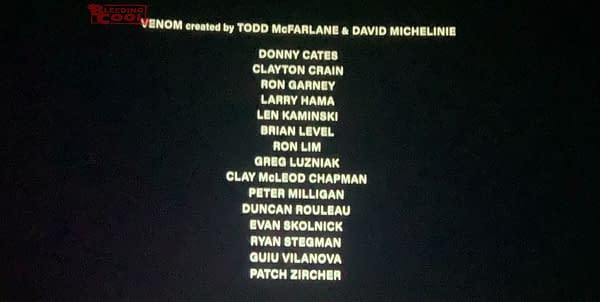Yes, I mentioned; X rays, the Rosetta Stone, vulcanized rubber, nylon, quinine, the electric battery, dynamite, vaccination, the Big Bang, radioactivity, saccharin, the microwave, Play-doh, Corn Flakes, Super Glue, and Velcro. Let’s look at two from the medical field: penicillin and insulin. Both have saved, or prolonged, the lives of millions of people.PenicillinIn 1928, a Scottish professor of bacteriology, Authur Fleming, noticed that mold had started to grow in his petri dish of Staphylococcus bacteria colonies. Fleming had smeared Staphylococcus bacteria on a culture plate before going on holiday. While he was away, a mold spore had flown into the laboratory through an open window from another nearby laboratory where molds were being studied. When he returned, Fleming discovered the bacteria had grown and covered the entire plate except for one area, which was covered in mold.
People are also reading…
After investigating further, Fleming found a substance in the mold that prevented the bacteria from growing, even if it was diluted 800 times. Fleming found that the mold was a type called Penicillium notatum. This mold is similar to the green fuzzy mold that grows on bread. From the mold, Fleming developed the antibiotic now known as penicillin.By the late 1930s penicillin was being used to treat infections in hospitals. During World War II, military doctors used penicillin to treat infected wounds. Veterinarians also made good use of penicillin. Penicillin is now widely used in the treatment of throat infections, meningitis, pneumonia, and other infections. Fleming shared the Nobel Prize for Medicine in 1945 with Howard Florey and Ernst Chain, who had also worked on developing penicillin as a drug.In 1889, two doctors at the University of Strasbourg, Oscar Minkowski and Josef von Mering, were attempting to understand how the pancreas affected digestion. They removed the pancreas from a living dog. Days later, they noticed that flies were congregating around the dog’s urine. That is not normal or expected. They tested the urine and found sugar in it. It dawned on the doctors; they had given the dog diabetes. Minkowski and von Mering never determined what the pancreas produced that regulated blood sugar.In 1921, a young Canadian pharmacologist, orthopedist, and field surgeon, Frederick Banting and his assistant, Charles Best, figured out how to remove insulin from a dog’s pancreas. Before insulin was discovered by Banting and Best, people with diabetes didn’t live for long. There wasn’t much doctors could do for them. The most effective treatment was to put patients with diabetes on very strict diets with minimal carbohydrate intake. This could buy patients a few extra years but couldn’t save them. Harsh diets, some prescribed as little as 450 calories a day, sometimes even caused patients to die of starvation.Banting and Best kept a dog with severe diabetes alive for 70 days. The dog died only when there was no more extract. Later, a more refined and pure form of insulin was developed, this time from the pancreases of cattle.In January 1922, Leonard Thompson, a 14-year-old boy dying from diabetes in a Toronto hospital, became the first person to receive an injection of insulin. Within 24 hours, Leonard’s dangerously high blood glucose levels dropped to near-normal levels.The news about insulin spread around the world like wildfire. In 1923, Banting and Best received the Nobel Prize in Medicine, shared by two other researchers. Soon after, Eli Lilly started large-scale production of insulin. It wasn’t long before there was enough insulin to supply the entire North American continent.Sources: howstuffworks, the diabetes council, nih.com
Larry Scheckel taught science at Tomah High School for 38 years and was named Tomah Teacher of the Year three times. Send comments and questions to [email protected].
0 Comments
#lee-rev-content { margin:0 -5px; }
#lee-rev-content h3 {
font-family: inherit!important;
font-weight: 700!important;
border-left: 8px solid var(–lee-blox-link-color);
text-indent: 7px;
font-size: 24px!important;
line-height: 24px;
}
#lee-rev-content .rc-provider {
font-family: inherit!important;
}
#lee-rev-content h4 {
line-height: 24px!important;
font-family: “serif-ds”,Times,”Times New Roman”,serif!important;
margin-top: 10px!important;
}
@media (max-width: 991px) {
#lee-rev-content h3 {
font-size: 18px!important;
line-height: 18px;
}
}
#pu-email-form-breaking-email-article {
clear: both;
background-color: #fff;
color: #222;
background-position: bottom;
background-repeat: no-repeat;
padding: 15px 0 20px;
margin-bottom: 40px;
border-top: 4px solid rgba(0,0,0,.8);
border-bottom: 1px solid rgba(0,0,0,.2);
display: none;
}
#pu-email-form-breaking-email-article,
#pu-email-form-breaking-email-article p {
font-family: -apple-system, BlinkMacSystemFont, “Segoe UI”, Helvetica, Arial, sans-serif, “Apple Color Emoji”, “Segoe UI Emoji”, “Segoe UI Symbol”;
}
#pu-email-form-breaking-email-article h2 {
font-size: 24px;
margin: 15px 0 5px 0;
font-family: “serif-ds”, Times, “Times New Roman”, serif;
}
#pu-email-form-breaking-email-article .lead {
margin-bottom: 5px;
}
#pu-email-form-breaking-email-article .email-desc {
font-size: 16px;
line-height: 20px;
margin-bottom: 5px;
opacity: 0.7;
}
#pu-email-form-breaking-email-article form {
padding: 10px 30px 5px 30px;
}
#pu-email-form-breaking-email-article .disclaimer {
opacity: 0.5;
margin-bottom: 0;
line-height: 100%;
}
#pu-email-form-breaking-email-article .disclaimer a {
color: #222;
text-decoration: underline;
}
#pu-email-form-breaking-email-article .email-hammer {
border-bottom: 3px solid #222;
opacity: .5;
display: inline-block;
padding: 0 10px 5px 10px;
margin-bottom: -5px;
font-size: 16px;
}
@media (max-width: 991px) {
#pu-email-form-breaking-email-article form {
padding: 10px 0 5px 0;
}
}
.grecaptcha-badge { visibility: hidden; }
Be the first to know
Get local news delivered to your inbox!









